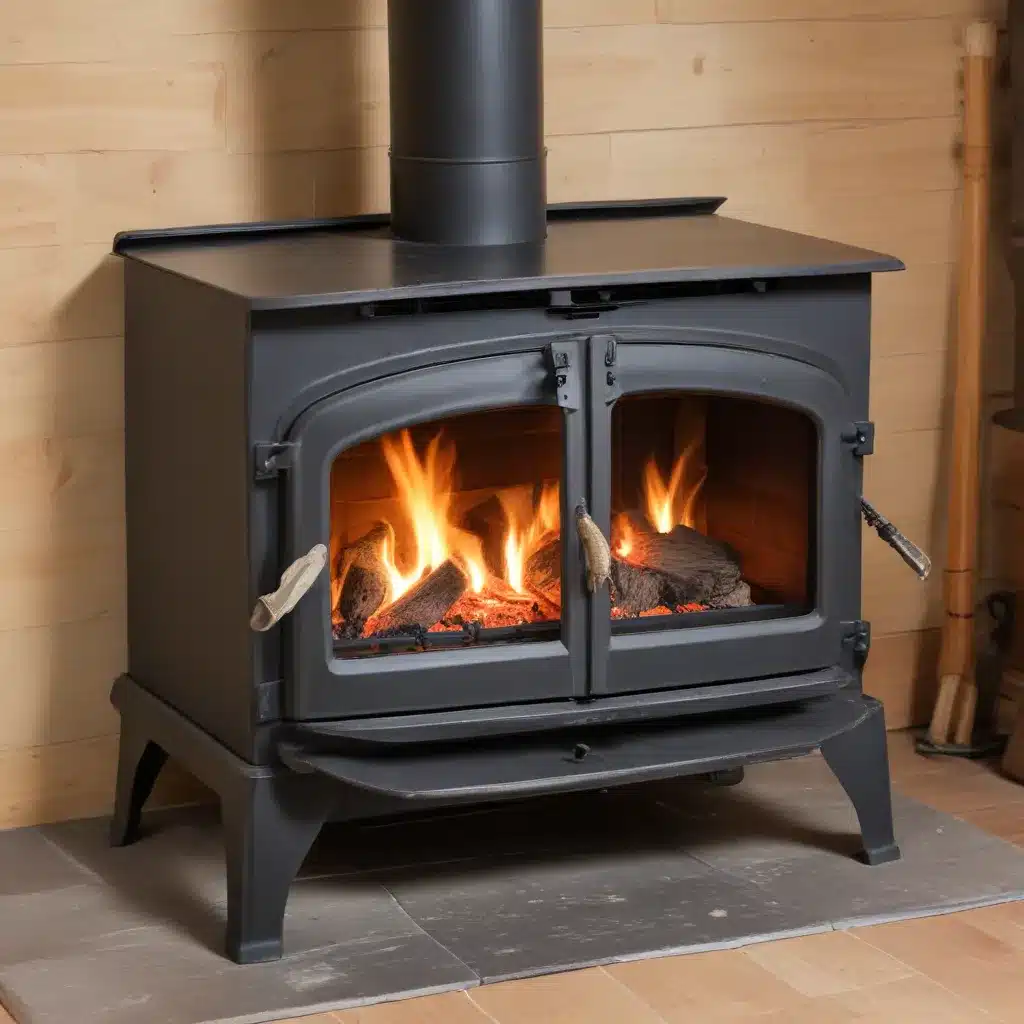
Maintaining a Well-Functioning Wood Stove: The Importance of Ash Removal
As a seasoned expert in wood stoves and heating solutions, I’ve seen firsthand how proper maintenance can significantly extend the lifespan and efficiency of a wood stove. One of the most crucial yet often overlooked aspects of wood stove care is the regular removal of ash. Neglecting this essential task can lead to a host of problems, from decreased heat output to potential fire hazards. In this comprehensive guide, we’ll explore the importance of ash removal and delve into the best techniques to keep your wood stove running at its peak performance.
Understanding the Role of Ash in Wood Stove Operation
Ash is a natural byproduct of burning wood in a stove, and it plays a vital role in the overall functioning of the system. A thin layer of ash in the firebox can actually help insulate the stove, allowing it to retain heat more effectively and achieve higher combustion temperatures. However, letting the ash accumulate beyond a certain level can have detrimental effects.
Excessive ash buildup can impede airflow, reducing the stove’s efficiency and making it more difficult to maintain a consistent, controlled burn. This not only decreases the heat output but also increases the risk of smoke and emissions. Moreover, a thick layer of ash can damage the internal components of the stove, leading to premature wear and tear.
Mastering the Art of Ash Removal
To ensure the longevity and optimal performance of your wood stove, it’s crucial to develop a consistent routine for ash removal. Here’s a step-by-step guide to help you get started:
1. Timing is Key
The ideal time to remove ash from your wood stove is after the fire has completely died out and the ashes have cooled completely, typically around 12 hours after the last burn. Attempting to clean the stove while it’s still hot can be extremely dangerous and can damage the stove’s components.
2. Gather the Right Tools
Equip yourself with the proper tools for the job, including a metal ash bucket or container, a sturdy shovel or scoop, and a small brush or tongs for maneuvering the ashes. Wearing heat-resistant gloves and a face mask is also recommended to protect yourself from any lingering embers or dust particles.
3. Carefully Remove the Ashes
Start by opening the stove’s door or access panel, taking care to avoid any hot spots or embers. Using your shovel or scoop, gently remove the accumulated ash, being mindful not to disturb the thin layer at the bottom of the firebox that helps insulate the stove. Deposit the ashes into your metal container, ensuring they are completely extinguished before disposal.
4. Clean the Firebox
Once the ashes have been removed, take a moment to inspect the firebox for any debris or buildup. Use a small brush or tongs to remove any remaining ash or clinkers (hardened, fused ash) that may have adhered to the walls or grates. This will help maintain optimal airflow and prevent potential blockages.
5. Dispose of the Ashes Safely
It’s important to dispose of the ashes properly, as they can still contain hot embers that could pose a fire hazard. Carefully transfer the ashes to a non-combustible container, such as a metal bucket or a fireproof ash can, and ensure they are completely extinguished before discarding them. Avoid placing hot ashes in a standard household trash can, as this could lead to a fire.
Maintaining a Clean Flue and Chimney
Alongside regular ash removal, it’s essential to keep your wood stove’s flue and chimney clear of obstructions. Buildup of creosote, a tar-like substance that can accumulate in the flue, can increase the risk of a dangerous chimney fire. To prevent this, it’s recommended to have your chimney professionally inspected and cleaned at least once a year, or more frequently if you use your wood stove extensively.
During the inspection, a certified chimney sweep will assess the condition of the flue, remove any creosote buildup, and ensure the chimney is free of any blockages, such as bird nests or debris. This proactive maintenance will not only improve the efficiency of your wood stove but also enhance the overall safety of your home.
Maximizing Energy Efficiency and Burn Time
Proper ash removal can also have a significant impact on the energy efficiency and burn time of your wood stove. By maintaining a thin layer of ash in the firebox, you can help insulate the stove and retain heat more effectively, leading to longer burn times and reduced fuel consumption.
Additionally, a clean and well-maintained wood stove will burn wood more efficiently, generating more heat with less fuel. This can translate to lower heating costs and a smaller environmental impact, making it a more sustainable heating solution for your home.
Extending the Lifespan of Your Wood Stove
Consistent ash removal and overall stove maintenance are key to ensuring your investment in a wood stove pays off for years to come. By following the techniques outlined in this guide, you can extend the lifespan of your wood stove and enjoy its warmth and ambiance for many winters to come.
Remember, regular inspections, cleaning, and part replacements by a qualified professional can also help identify and address any potential issues before they become major problems. By taking a proactive approach to wood stove maintenance, you’ll be well on your way to a cozy, efficient, and long-lasting heating solution for your home.
For more information on wood stoves, fireplace maintenance, and sustainable heating options, be sure to visit https://woodstoveheaters.com/. Our team of experts is always here to provide practical tips, in-depth insights, and personalized recommendations to help you make the most of your wood stove and heating needs.


